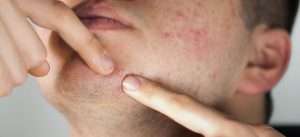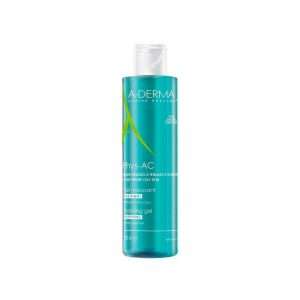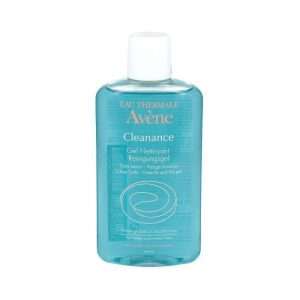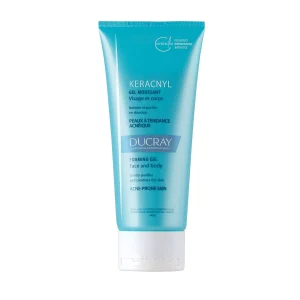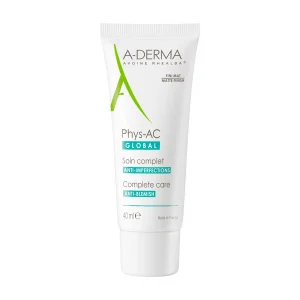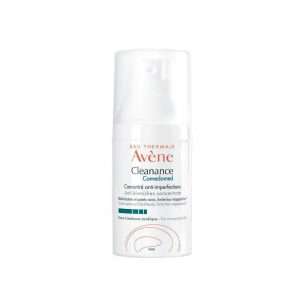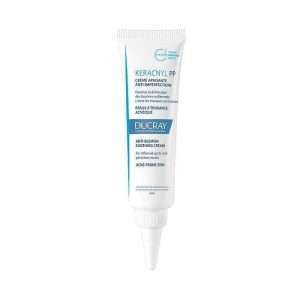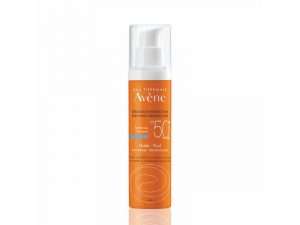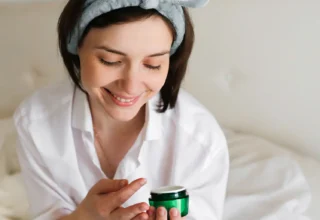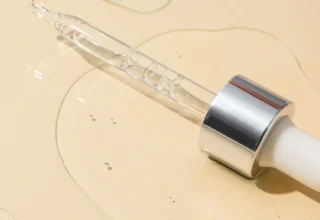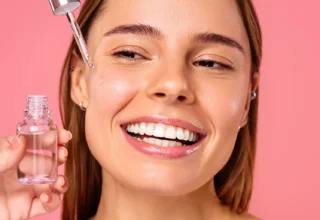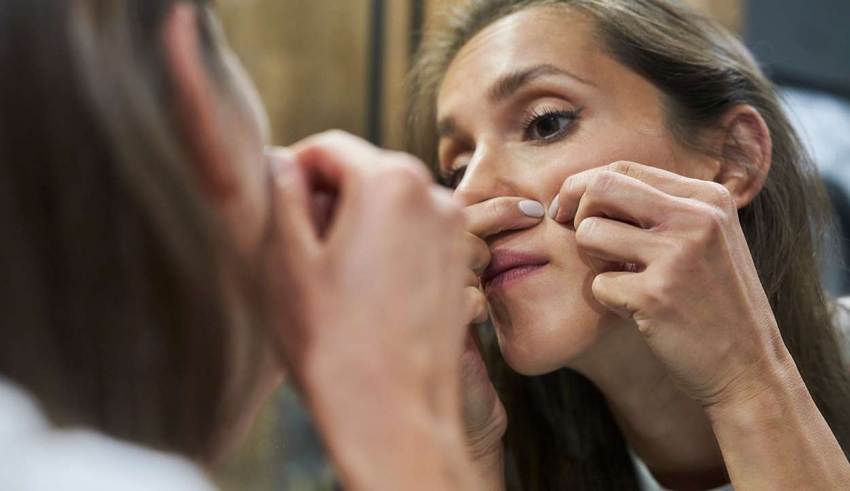
No matter their size, shape, or color, zits of any kind are no fun, but whiteheads, in particular, are a real nuisance. The good news is that there are ways to get rid of whiteheads for good, or at least turn them into occasional visitors rather than long-time guests. The last thing you want to do when you have a breakout is waste time figuring out how to treat them. So, skip searching the internet for do-it-yourself recipes or extraction tips and read this article from The Dermo Lab.
Like most skin problems, whiteheads can be tricky to treat without the help of a specialist. That’s why we reached out to the dermatologist and cosmetologist Dr. Shaima Abdul Majeed to give us her best tips and advice for getting rid of whiteheads.
Here’s a complete guide to banishing whiteheads, once and for all!
What are whiteheads?
According to Dr. Shaima Abdul Majeed, whiteheads are a form of acne resulting from the accumulation of sebum and dead skin cells that clog the skin’s pores and make them vulnerable to bacterial growth.
Whiteheads can develop anywhere on your body. Dr. Shaima Abdul Majeed indicates that whiteheads are mainly found on the face, especially on the forehead, cheeks, and chin, and sometimes they appear on the upper back.
Acne can occur in men and women at almost any age. Even if you never had a problem with whiteheads as a teenager, you may get them at some point in your adult life.
How do you get whiteheads?
Understanding the causes of whiteheads can help you prevent further breakouts. As we’ve seen, clogged pores are the main cause of whiteheads. Your pores can become clogged for several reasons. Hormonal changes, which are common acne triggers, are one cause of clogged pores.
Certain life stages can increase the amount of sebum, or oil, produced by your pores. These stages include:
- Puberty
- Menstruation
- Pregnancy
Some progesterone-based contraceptives can also increase hormone levels and cause acne breakouts in women. Similarly, some women notice an increase in acne at certain stages of their menstrual cycle when they stop taking the birth control pill.
Several studies have shown that genetics also play a role in developing different types of acne, including whiteheads. If someone in your family has acne, you have a higher risk of getting it too.
Whiteheads can also appear in areas where there is a lot of friction, such as the chin due to the chin strap of sports equipment.
How to remove whiteheads on the face?
Whiteheads are considered a mild form of acne. They are relatively easy to treat.
Once you’ve determined that whiteheads are what you have on your skin, it’s time to come up with a plan of attack. The best way to care for skin prone to whiteheads is to adopt a skin care routine that will help reduce the appearance of whiteheads and prevent recurrence. Whether you have a few whiteheads on your nose or they’re widespread on other parts of your face, start following a skin care routine for acne-prone skin to promote clearer, healthier-looking skin.
To get rid of whiteheads and acne in general, a good skin care routine should include the following steps:
1- Cleanse your skin thoroughly
Since whiteheads are caused by the accumulation of oil, dirt, and debris, it is important to thoroughly cleanse your skin to avoid clogged pores. Dr. Shaima Abdul Majeed recommends washing your face daily using cleansers that are appropriate for your skin type.
Cleanse your skin using lukewarm water and make sure to pat your skin dry instead of scrubbing. However, avoid excessive washing as it can cause irritation and aggravate acne. Twice a day seems like the magic number, but there’s no harm in washing off the sweat and grime after an intense workout.
So which one to choose? We’ve rounded up the best cleansers so you can get your skin care routine started on the right track.
Phys-AC Foaming Gel from A-Derma
Cleanance Cleansing Gel from Eau Thermale Avène
Keracnyl Foaming Gel from Ducray
2- Apply a spot treatment after cleansing
The best method is to use whitehead-busting products to reduce oil build-up and pore-clogging. This speeds up cell turnover and shortens the life of a whitehead. These products also remove excess oil and limit bacterial adhesion. Once you start using them, you will enjoy clearer, healthier skin and reduce the risk of future breakouts.
Here, we’ve rounded up the 3 best acne treatments:
A-Derma Phys-AC Global
Eau Thermale Avène Cleanance Comedomed
Ducray Keracnyl PP Anti-Blemish Soothing Cream
3- Resist the urge to pop whiteheads
When it comes to whiteheads, the number one rule is to never pop them. As tempting as it may be, Dr. Shaima Abdul Majeed strongly advises against it as it can have some bad consequences.
The way you treat whiteheads can affect the health of your skin. The pore is usually closed and touching, picking, or squeezing whiteheads can sometimes cause dirt and oils to penetrate deeper into the skin, creating painful pimples under the skin. Picking can also push bacteria and oils into the pores, making acne worse. Finally, popping increases the risk of scarring. So, hands-off!
4- Exfoliate only a few times per week
This removes dead skin that can clog your pores. As a bonus, it gives your skin a brighter and smoother look. Beware, excessive exfoliation can lead to further irritation and more acne problems. Dr. Shaima Abdul Majeed recommends using skin peeling creams twice a week.
5- Wear sunscreen
Because acne-prone skin is so sensitive, it is even more important to protect it from the sun’s harmful UV rays. By keeping your skin barrier healthy with an SPF product, you’ll prevent your body from reacting in a way that would ultimately be even more harmful to your skin.
Not sure which formula to buy? This sunscreen for acne-prone skin will keep your complexion clear and pimple-free.
Very High Protection Fluid SPF 50+
6- Opt for oil-free makeup
If you wear makeup, consider using non-comedogenic and oil-free cosmetic brands. These products are best suited for acne-prone individuals because they do not clog pores. This reduces the likelihood of acne, including whiteheads.
How long does it take for whiteheads to go away?
Give it time! Like most things, treating whiteheads and getting visible results takes time. Waiting to see results can be worth it, and all it takes is a little patience. Allow 6 to 8 weeks for the treatment to take effect.
Talk to your doctor
Acne and whiteheads can be frustrating and annoying. However, help is at hand. If you’re dealing with a mild case of whiteheads, see if you can manage the acne with the above skin care routine.
If that doesn’t work and you still feel like your whiteheads are out of control, it’s time to head to the dermatologist. The derm may be able to recommend other treatments or stronger medications. According to Dr. Shaima Abdul Majeed, these include creams and ointments containing benzoyl peroxide, resorcinol, and salicylic acid, and in some cases, certain types of oral antibiotics.
